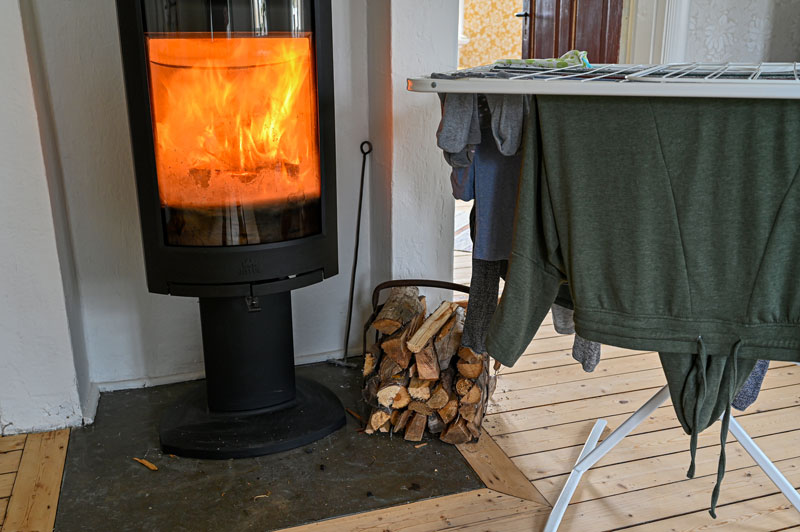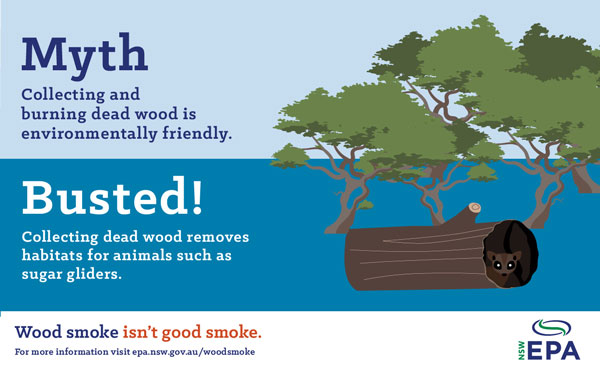Air Pollution

The correct operation of a heater not only means more efficient burning and heating, but also reduced chimney smoke which may cause a nuisance to nearby residents.
Some of the ways in which to ensure the correct operation of your wood heater include:
- Always burn small logs of dry, well-seasoned hardwood;
- Store firewood in a dry, well-ventilated area;
- Stack wood loosely in a wood heater to allow air to circulate
- Use dry kindling to establish a fire quickly;
- Do not leave the fire to smoulder overnight;
- Regularly check the chimney for smoke;
- Ensure the chimney is cleaned at least once a year to remove soot and tar build-up. This will increase the heat of a fire and reduce smoke emissions.
If you are concerned by wood-smoke from a neighbour’s chimney Council can investigate and try to reach a solution without enforcement.
In some situations Council may take action. Council officers must see excessive smoke coming from a chimney before action can be taken.
Odour complaints
When investigating an odour complaint Council considers factors including the source, the amount of odour emitted, the duration and rate of emission, the sensitivity of the surrounding environment and the impact.
You can reduce odour emissions by keeping your property tidy and preventing vegetation or rubbish from accumulating. Also, please consider weather conditions before starting work that will create an odour – for instance, don’t fertilise your garden on a hot day.
If you have concerns about an odour, you can ask Council to investigate.
Causes of excessive wood smoke
- Common operational causes of excessive smoke are:
- insufficient kindling
- too much firewood in the heater
- turning the air control to slow burn too soon after light-up or refuelling
- trying to burn a single large log
- adding firewood without opening the air control
- an incorrectly placed log which blocks the air supply to the base of the fire
- use of wood that is too wet
- Common installation or maintenance issues that cause excessive smoke are:
- heater flue is clogged with creosote and needs to be swept. Symptoms of a clogged flue are:
- the heater is difficult to start
- smoke enters the room when heater door is opened
- flue length is too short for adequate 'draw'. The flue is an important component of the wood heater installation and needs to be long enough to draw sufficient air for proper combustion of the fuel
- poor location of heater and/or flue. A wood heater will perform better (in terms of both heating effectiveness and reduced smoke emissions) when located towards the centre of the home and not against an outside wall
- DIY repairs such as those that leave the heater with missing components or the baffle plate incorrectly installed.
- heater flue is clogged with creosote and needs to be swept. Symptoms of a clogged flue are:
EPA's top tips for better wood heater operation
- Always burn small logs of aged, dry hardwood – unseasoned wood has more moisture and is more likely to smoke.
- Store firewood under cover in a dry ventilated area; freshly cut wood needs to be stored for 8–12 months.
- Never burn rubbish, driftwood or treated or painted wood. These pollute the air and can be poisonous.
- When lighting a cold heater use plenty of dry kindling to establish a good fire quickly.
- Stack wood loosely in the firebox so air can circulate – don't cram the firebox full.
- Turn off the warm air circulation fan when lighting up and when refuelling.
- Keep the flame lively and bright; your fire should only smoke for a few minutes when you first light it and when you add extra fuel. Open the air controls fully for 5 minutes before and 15–20 minutes after reloading.
- Don't let your heater smoulder overnight – keep enough air in the fire to maintain a flame.
- Check your chimney regularly – if there is smoke coming from the chimney, increase the air supply to your fire.
- Clean the chimney every year, to prevent creosote build-up.
Download the EPA Woodsmoke brochure (PDF 2.6MB)

For further information visit the EPA's Reducing Your Wood Smoke Emissions page








